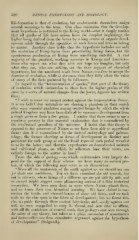Page 510 - My FlipBook
P. 510
520 : DENTAL EMBRYOLOGY AND HISTOLOGY. —
life-formation is that of evolution, but evolutionists themselves assign
several meanings to the term. One class maintains that the develop-
ment hypothesis is restricted to the living world—that it simply teaches
that all grades of life have arisen from the simplest beginnings, the
higher being derived from the lower by a long course of organic devel-
opment solely through the operation of such forces and laws as belong
to matter. Another class holds that the hypothesis includes not only
the evolution of living forms from pre-existing living forms, but the
spontaneous production of living from non-living material. A vast
majority of the practical, working scientists in Europe and America
those who report not what they wish nor hope nor imagine, but only
what they see, who are seeking, not the mere sujjport of cherished
hypotheses, but the uncolored truth from Nature,—refuse to accept the
doctrine of evolution, while at the same time they fully allow the value
of many of the facts gathei'ed by its followers.
In regard to the "transmutation of species," that part of the theory
of evolution which undertakes to show how the higher grades of life
came by a series of natural changes from the lower, Agassiz has written
thus
" I wish to enter my earnest protest against the transmutation theory.
It is my belief that naturalists are chasing a phantom in their search
after some material gradation among created beings by which the whole
animal kingdom may have been derived by successive development from
a single germ or from a few germs. I confess that there seems to me a
repulsive poverty in this material explanation that is contradicted by
the intellectual grandeur of the universe. I insist that this theory is
opposed to the processes of Nature as we have been able to apprehend
them ; that it is contradicted by the facts of embryology and palaeon-
tology, the former showing us forms of development as distinct and
persistent for each group as are the fossil types of each period revealed
to us by the latter ; and that the experiments on domesticated animals
and cultivated plants, on which its adherents base their views, are
entirely foreign to the matter in hand."
From the side of geology—on which evolutionists very largely de-
pend for the support of their scheme—we have many an earnest pro-
test, of which the following may serve as an illustration:
"Were all the anatomists of the earth against us, we should not one
jot abate our confidence. For we have examined the old records, but
not in cabinets, where things of a different age are put side by side, and
so viewed might suggest some glimmering notions of a false historical
connection. We have seen them in spots where Nature placed them,
and we know their true historical meaning. We have visited in suc-
cession the tombs and charnel-houses of these old times, and we took
with us the clue spini in the fabric of development; but we found this
clue no guide through these ancient labyrinths, and, sorely against our
will, we were com])elled to snap its thread, and now dare to affirm,
with all the confidence of assured truth, that geology—not seen through
the mists of any theory, but taken as a ])lain succession of monuments
and facts—offers one firm cmnulative argument against the hypothesis
of development" (Sedgwick).


